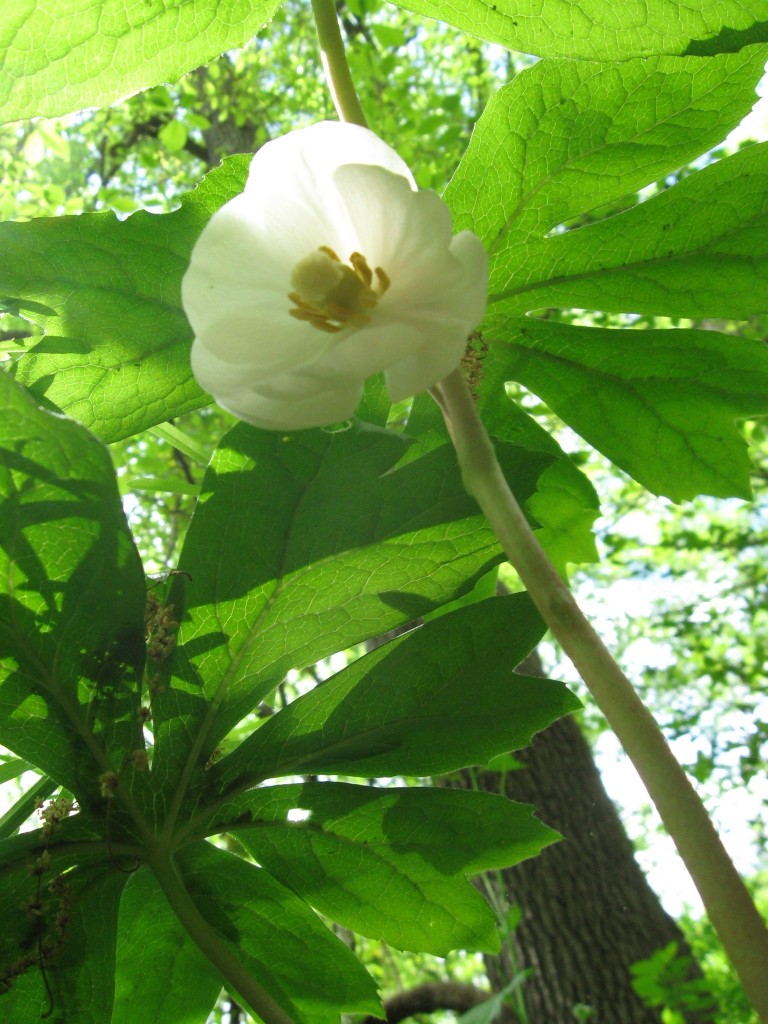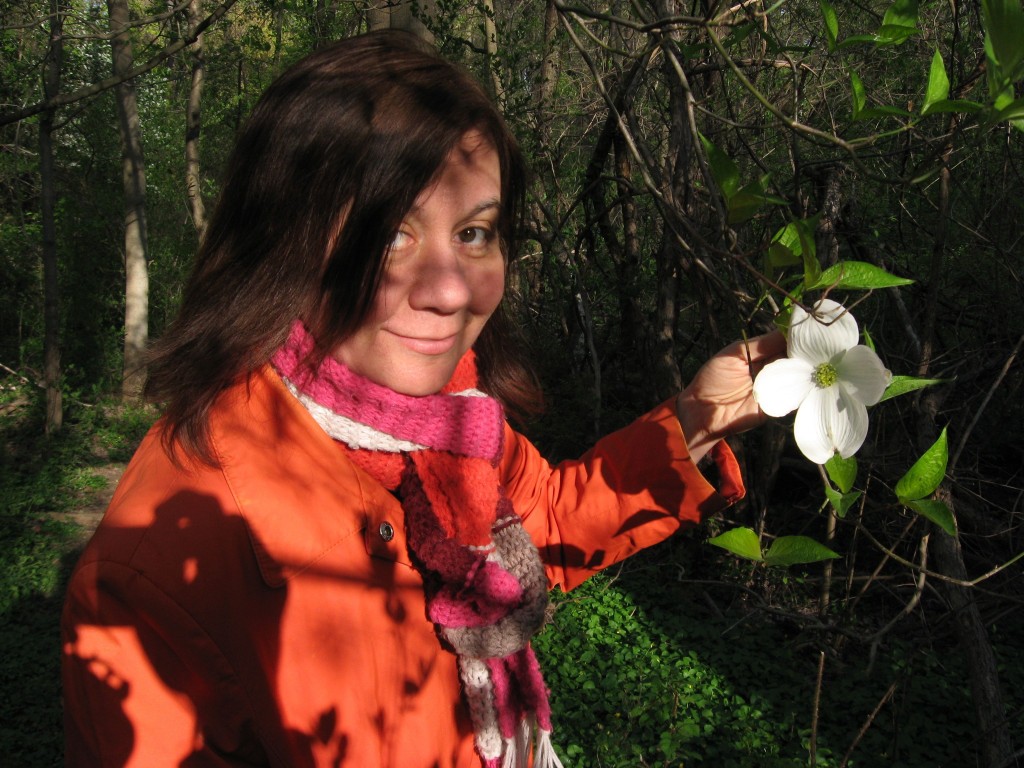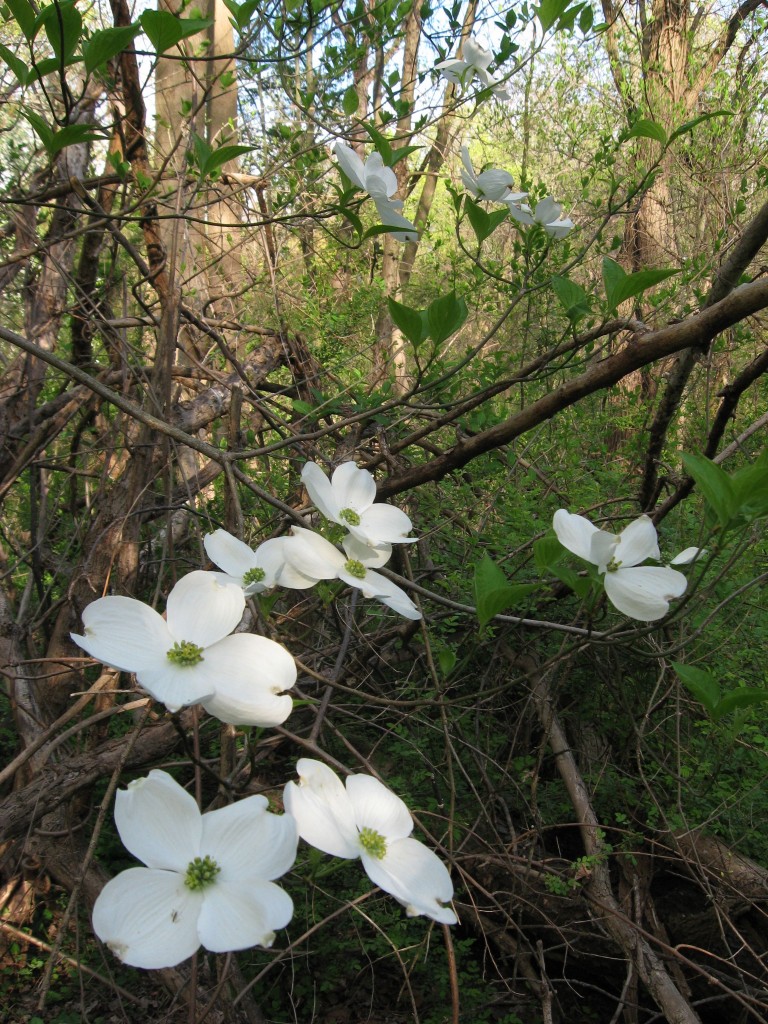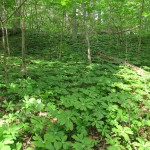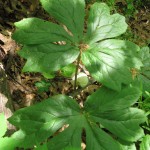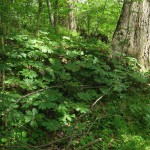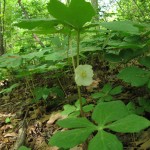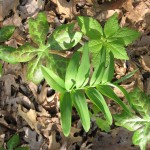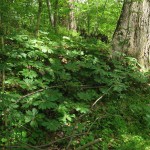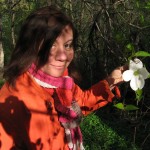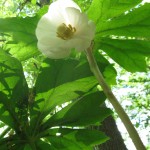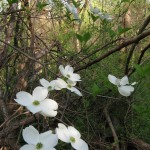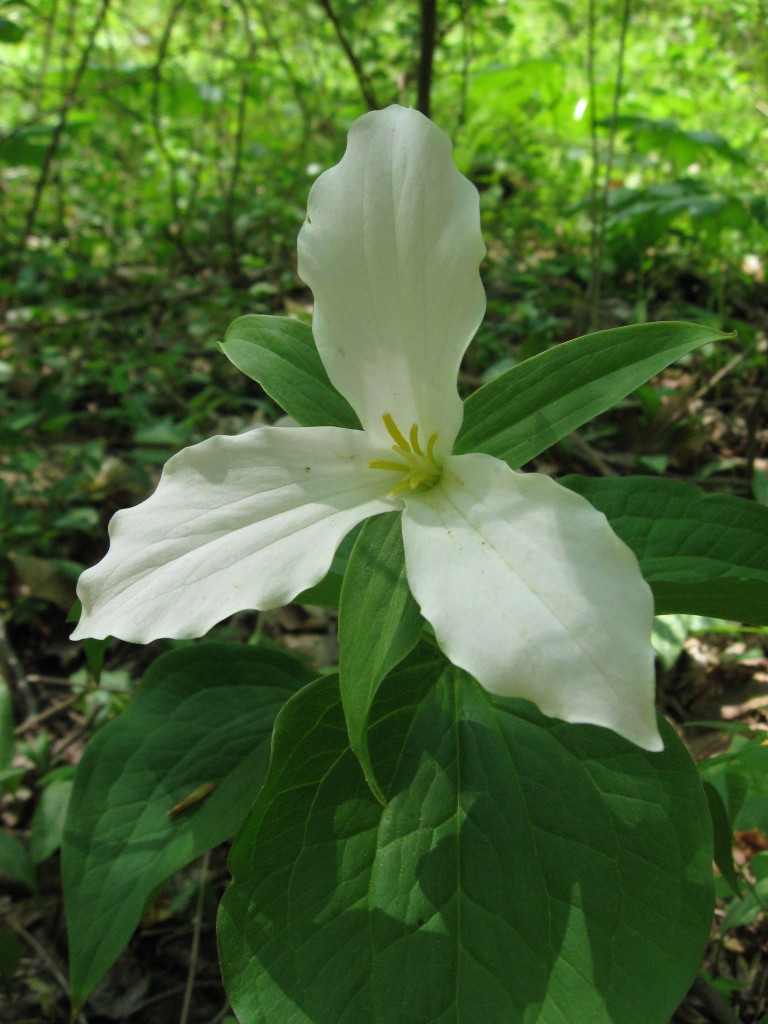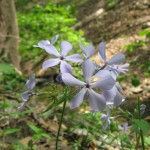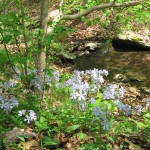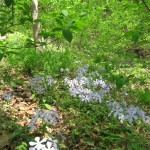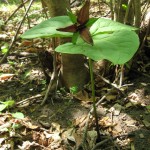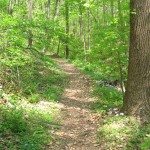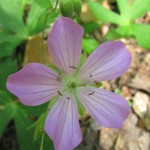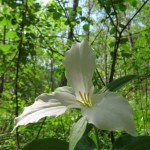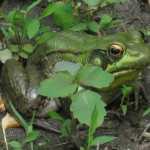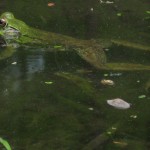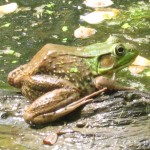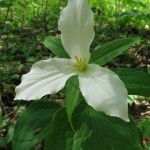In our travels through the city the past few weeks, Mayapples have dominated the herbaceous layer of the forest-scape, with their pretty leaves and stunning waxy blooms. Â Today we are going to feature a few plants we found associated with the Mayapples, in two locations, within a mile apart in the Roxborough section of Philadelphia.
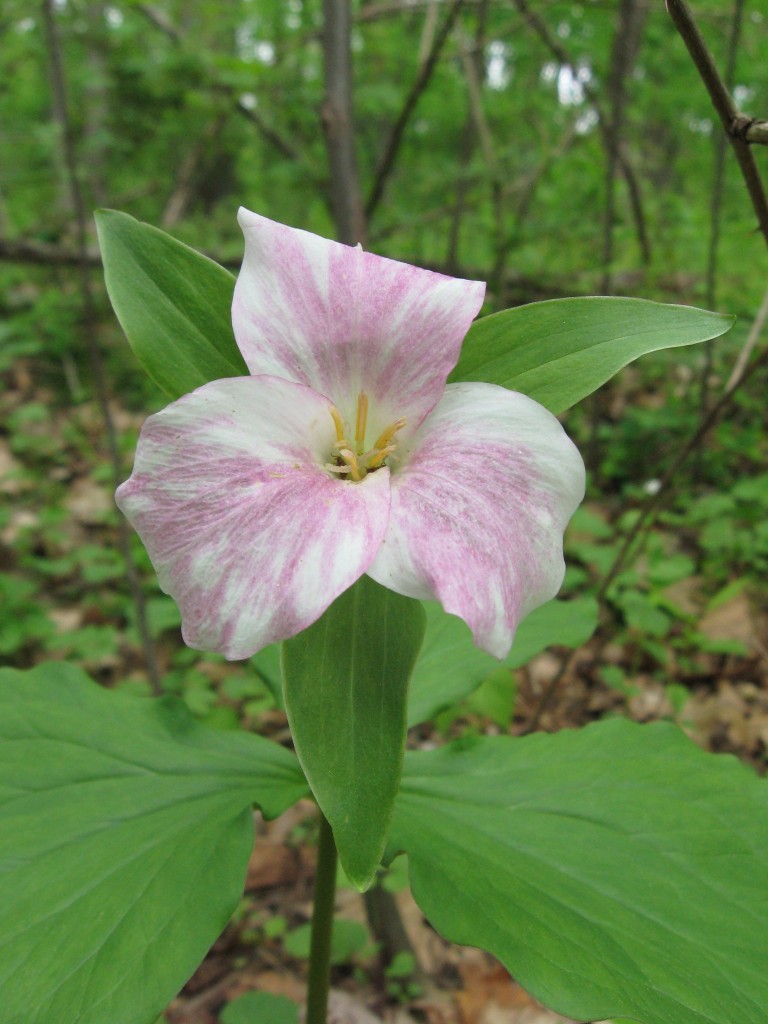
The Schuylkill Center has a great woods, full of surprises.  They also had a  native plant sale, where we purchased a Hearts-A-Bustin’ Strawberry bush, the Euonymus  americana for our yard.  We then went for a walk on the grounds, and we went to Penns Acres, a section of woods enclosed in deer fencing to protect the plants from browsing. Thats where we saw this aging Trillium grandiflorum pictured above.  When the flower gets older, it turns pink.
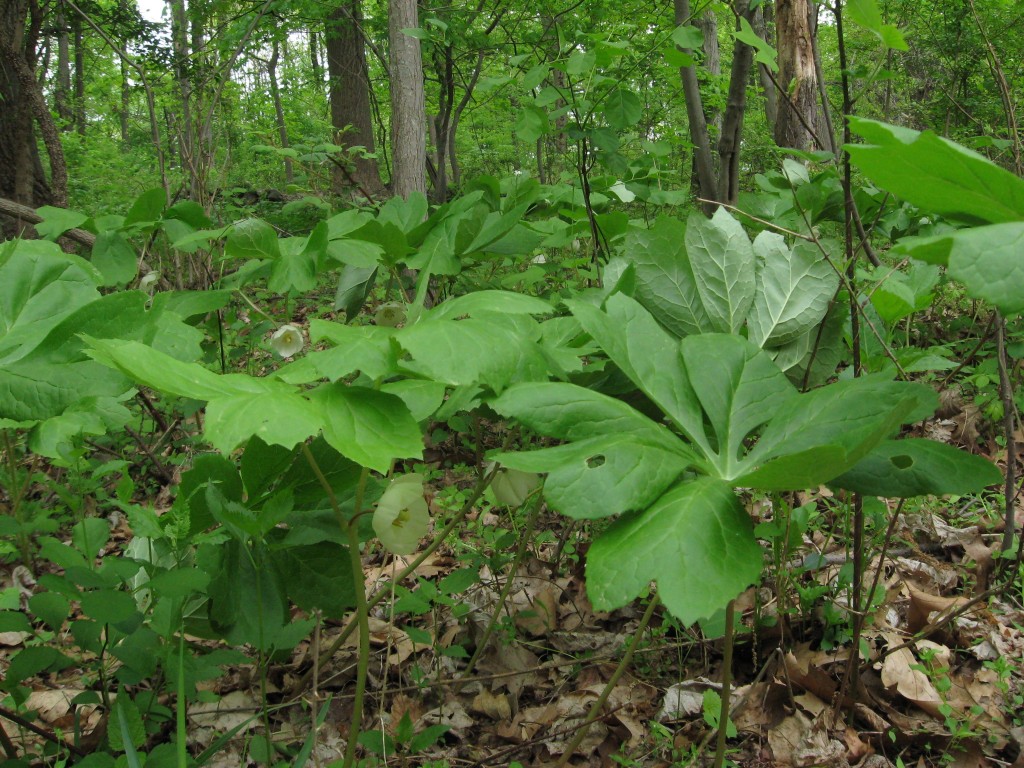
This is the world of the Mayapple!
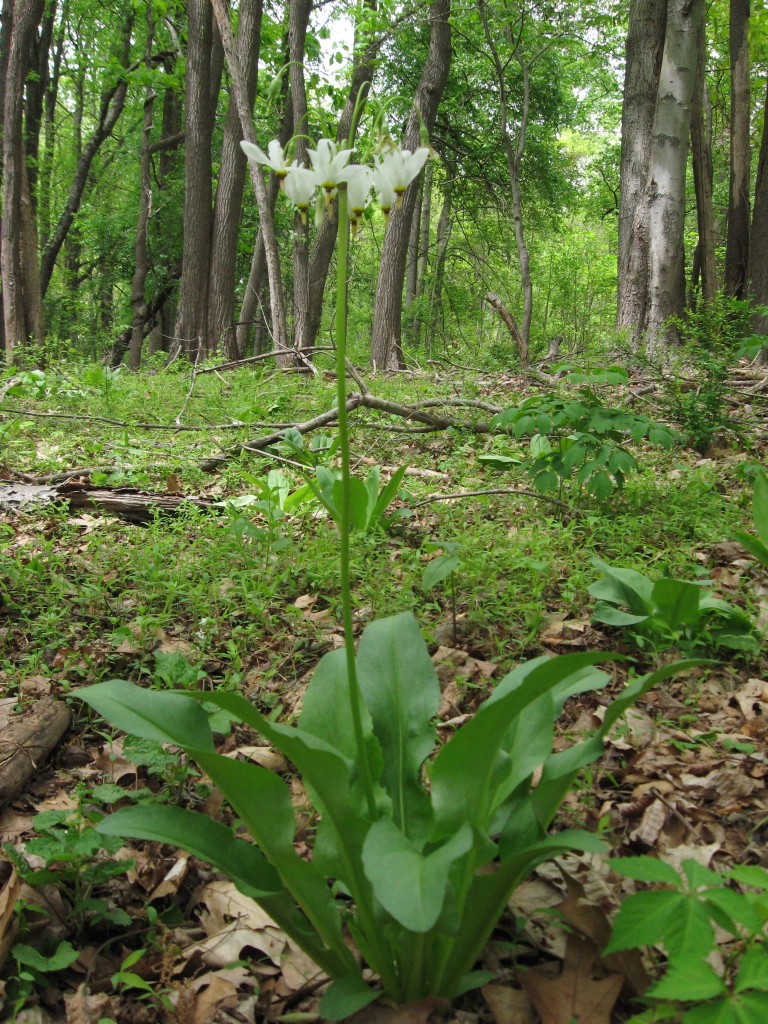
Dodecatheon meadia
Finding the Shooting Star blooming was a pleasant and unexpected surprise. Â The only one we had ever seen was the two specimens in our yard which are also currently in bloom.
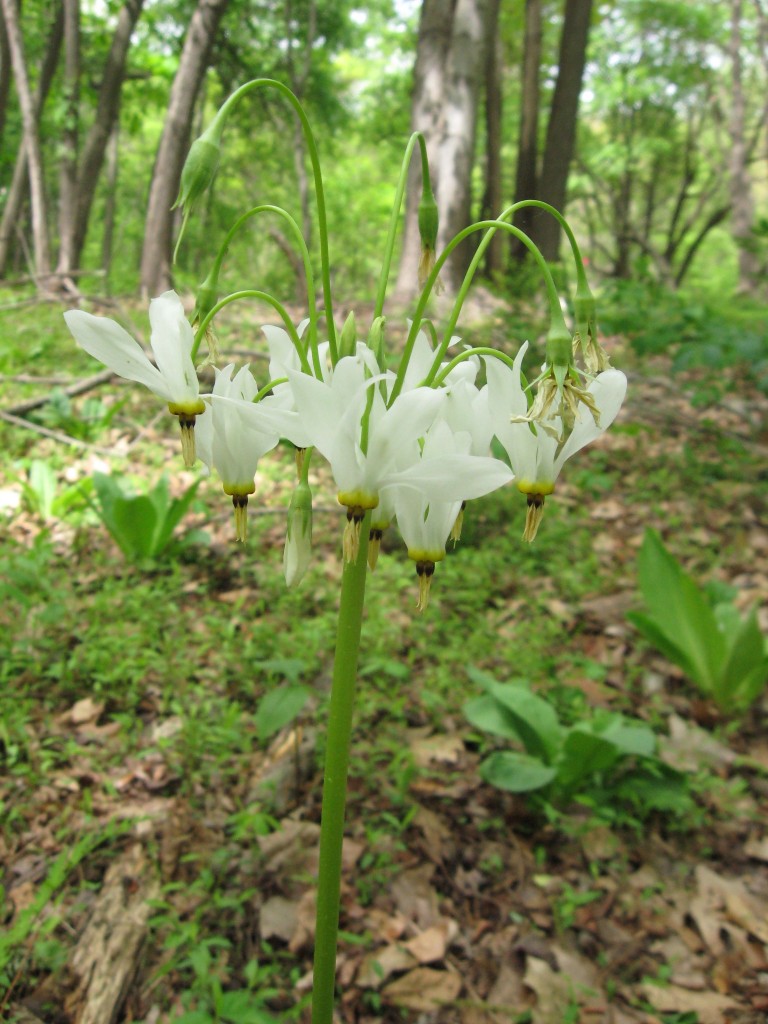
The flower is like a chandelier or a fountain. Available in local native plant nurseries and plant sales.
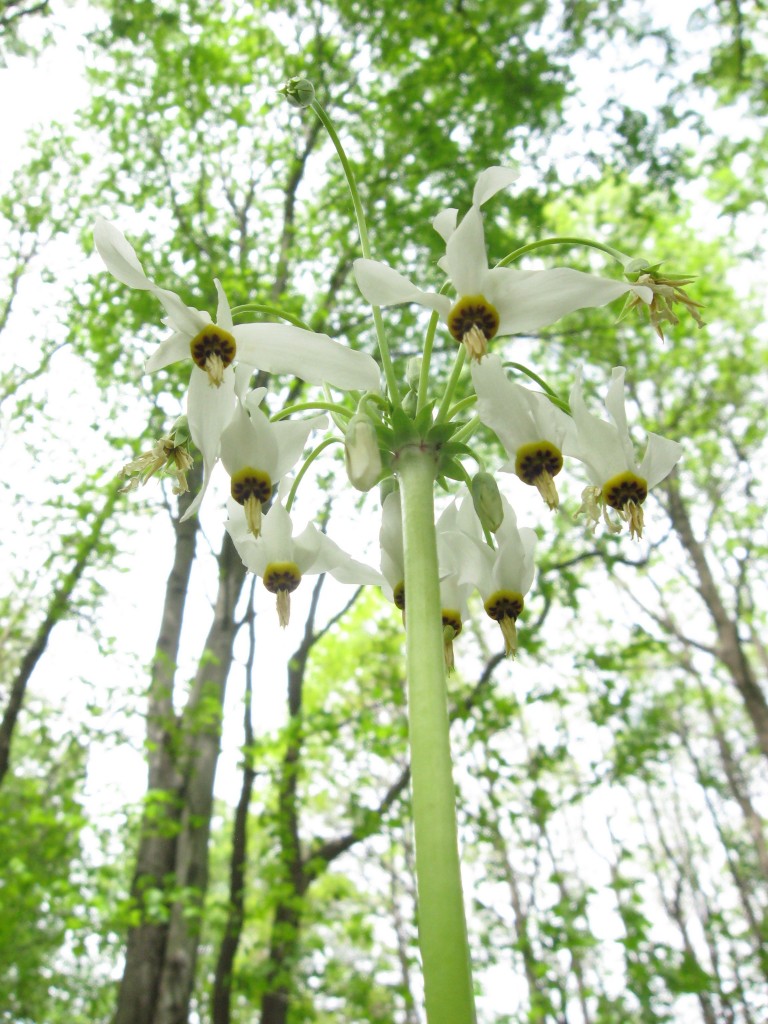
For the flower enthusiast, this place has everything, right here in the city as well.  The friendly staff gave us a trail map that helped us to find the trails that  led off the beaten paths, deep into the woods. We saw Dogwoods flowering all over, with Bluebells, patches of Mayapple and Trillium, Redbud trees, Jack-in-the Pulpit, and Black and Blue cohosh.
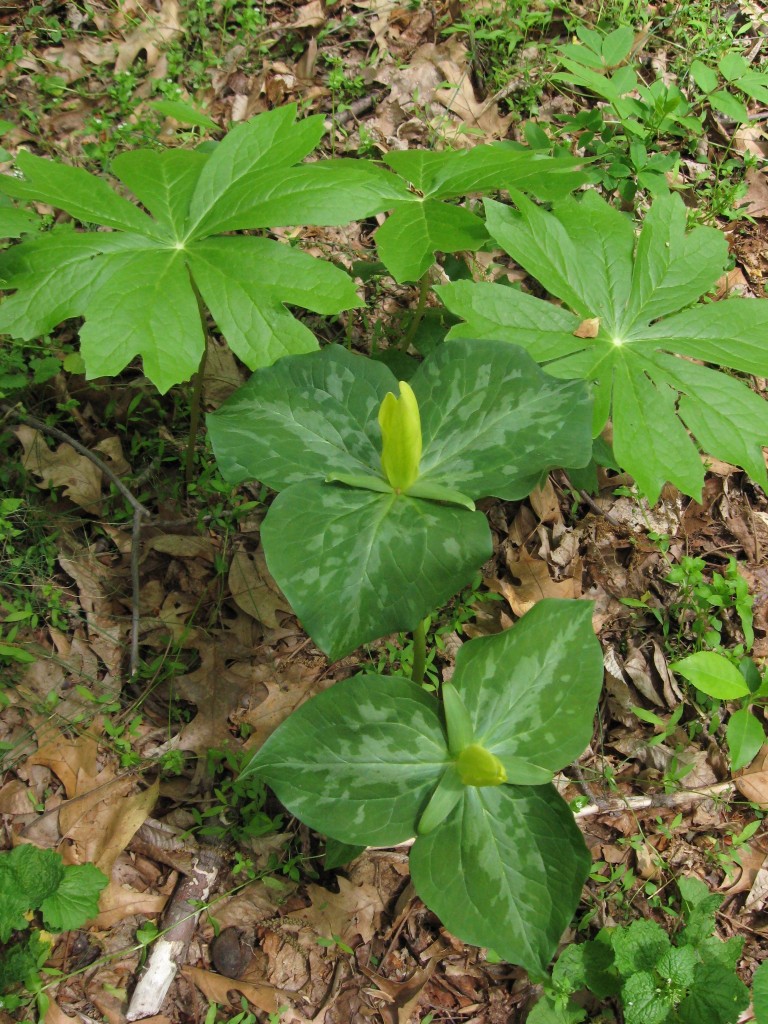
We had never seen this Sessile Trillium before in the City of Philadelphia. We much admired these specimens, but wondered about their origins. Could they have been introduced, or are they just growing naturally?
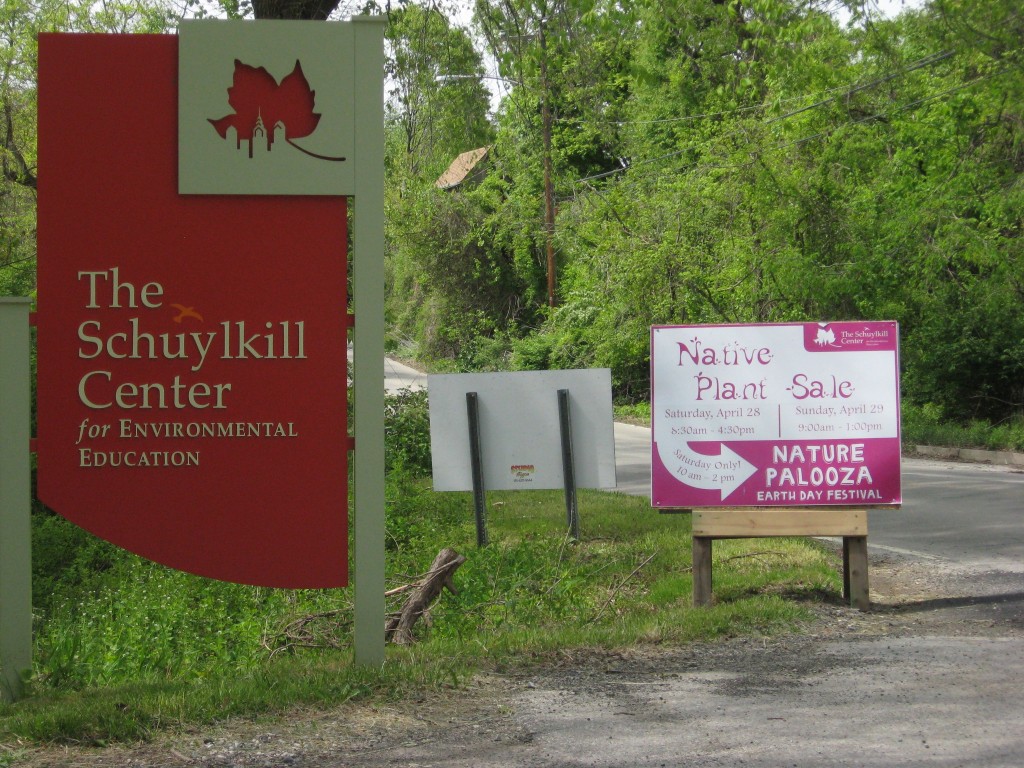
Now, off to the Wissahickon!
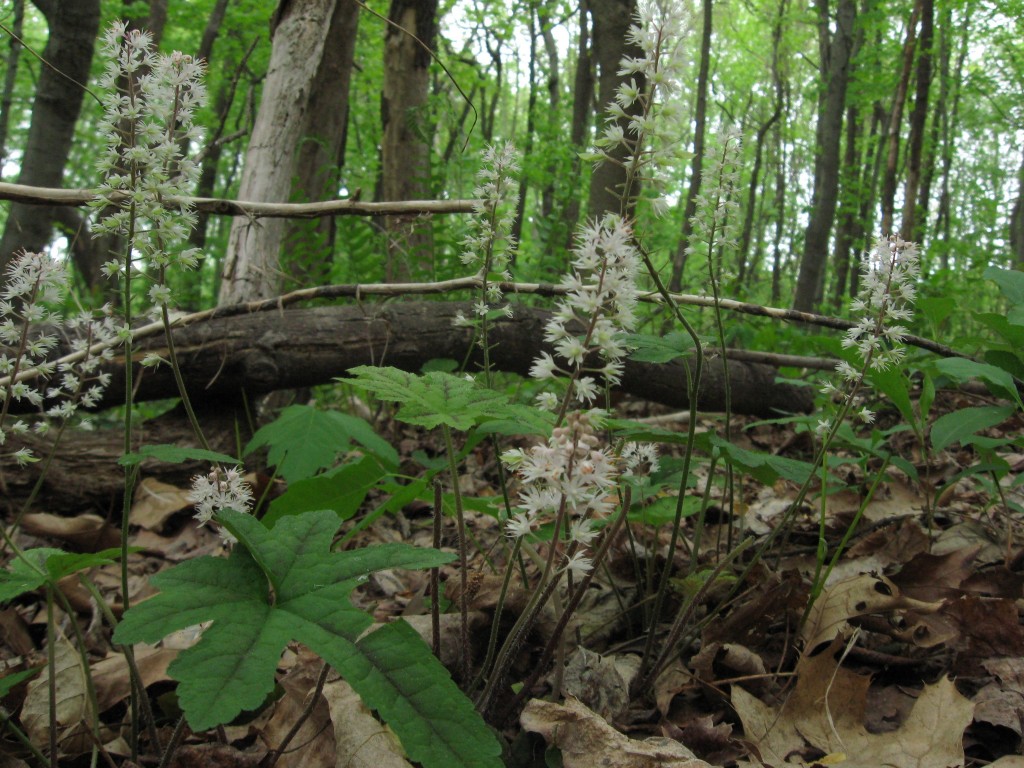
We found the Foamflower near Bells Mill Road.
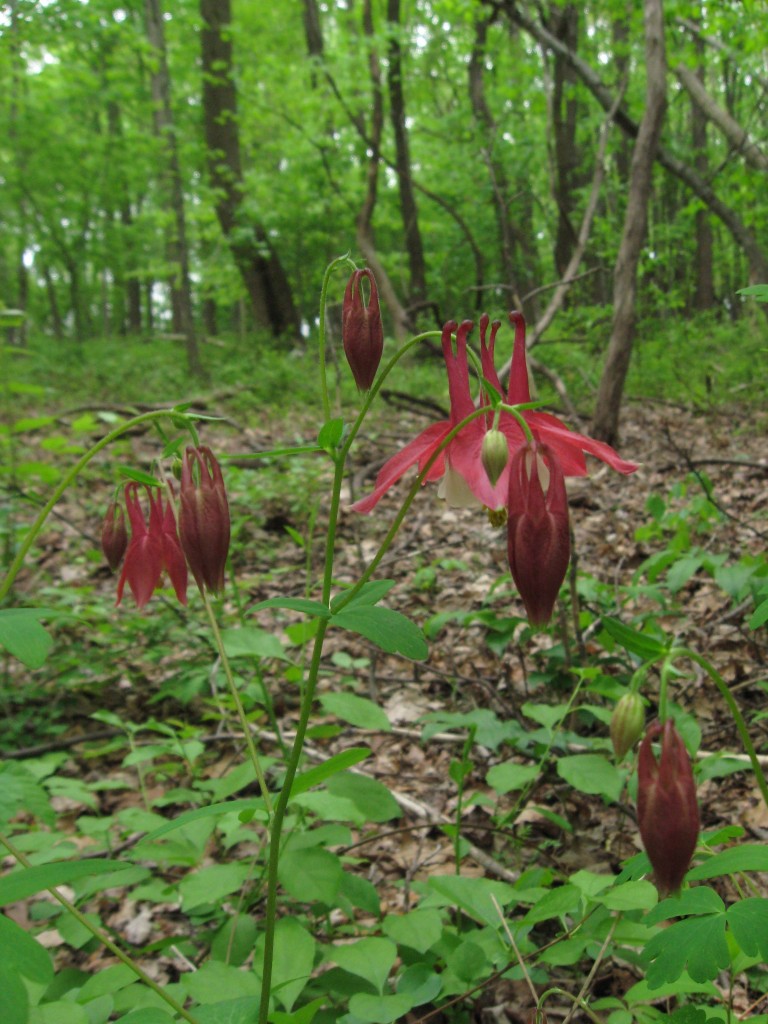
And then a whole colony of Columbine! Â We were so enchanted with the wildflowers, we got lost! Â We were on some obscure trails we had never been on before and lost our way. In every direction were tall Tulip Poplars. We walked for over an hour in nothing but deep forest, full of Spicebush, Bloodroot, Mayapple, Sensitive and Christmas fern, and we even found a blooming Pinxter Azalea!
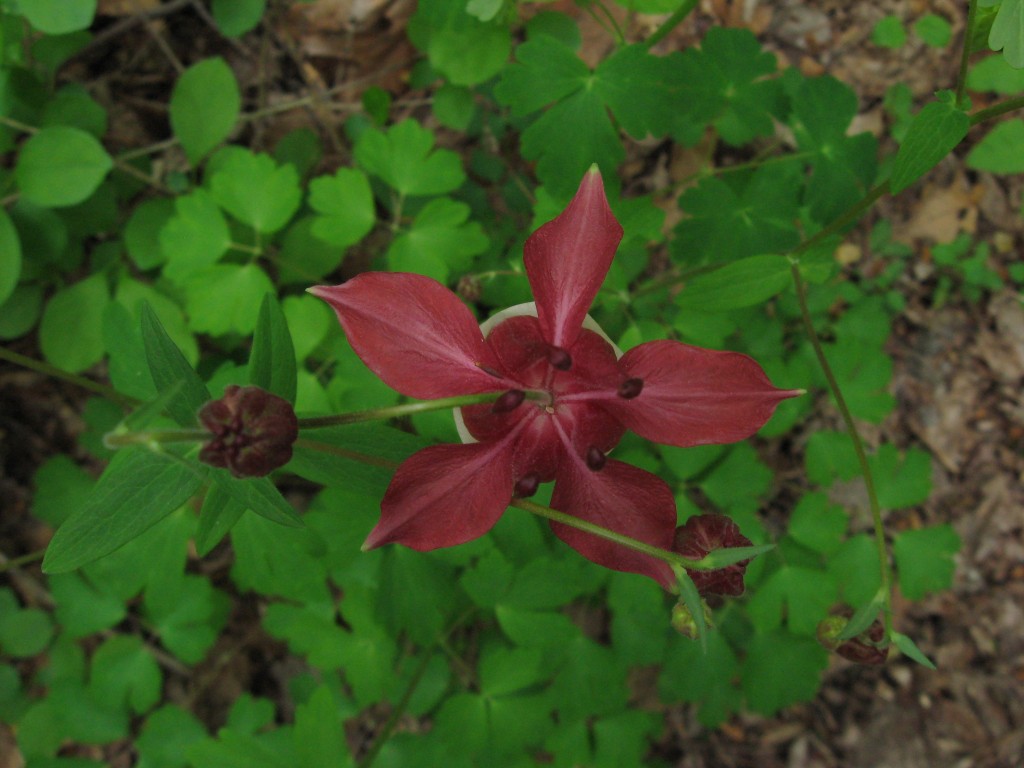
At one point we were so lost we started to worry about how to get back, and we passed a charming ravine, and we spotted blue specks below us and they caught our eyes, and we decided to investigate.
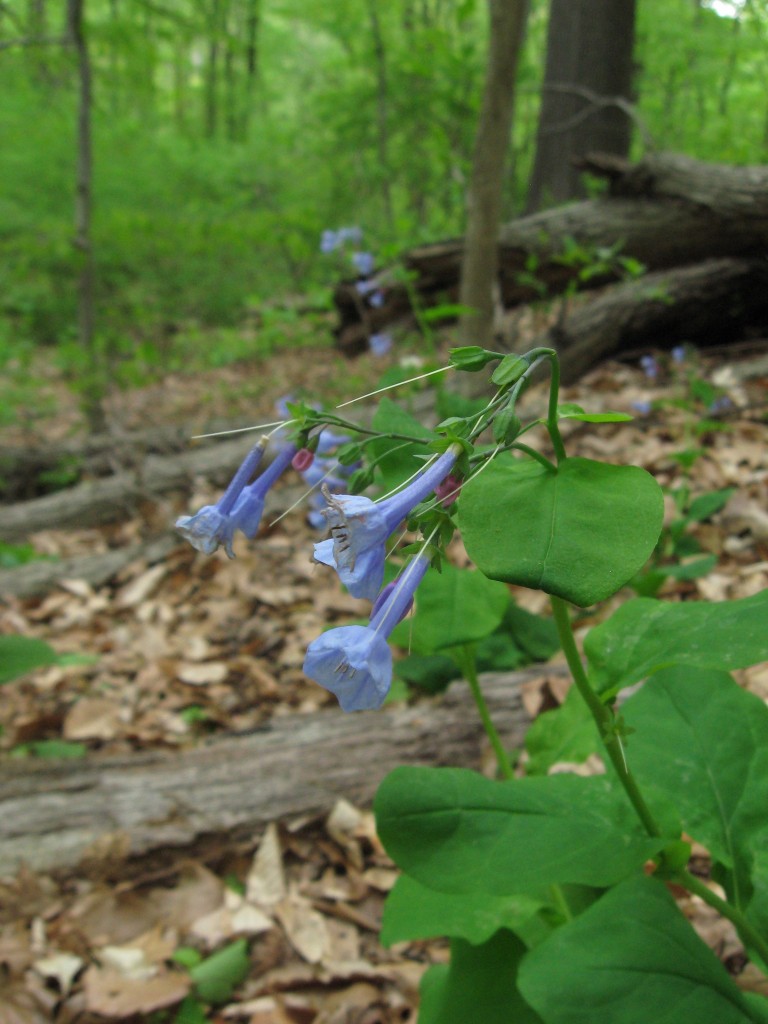
Bluebells!
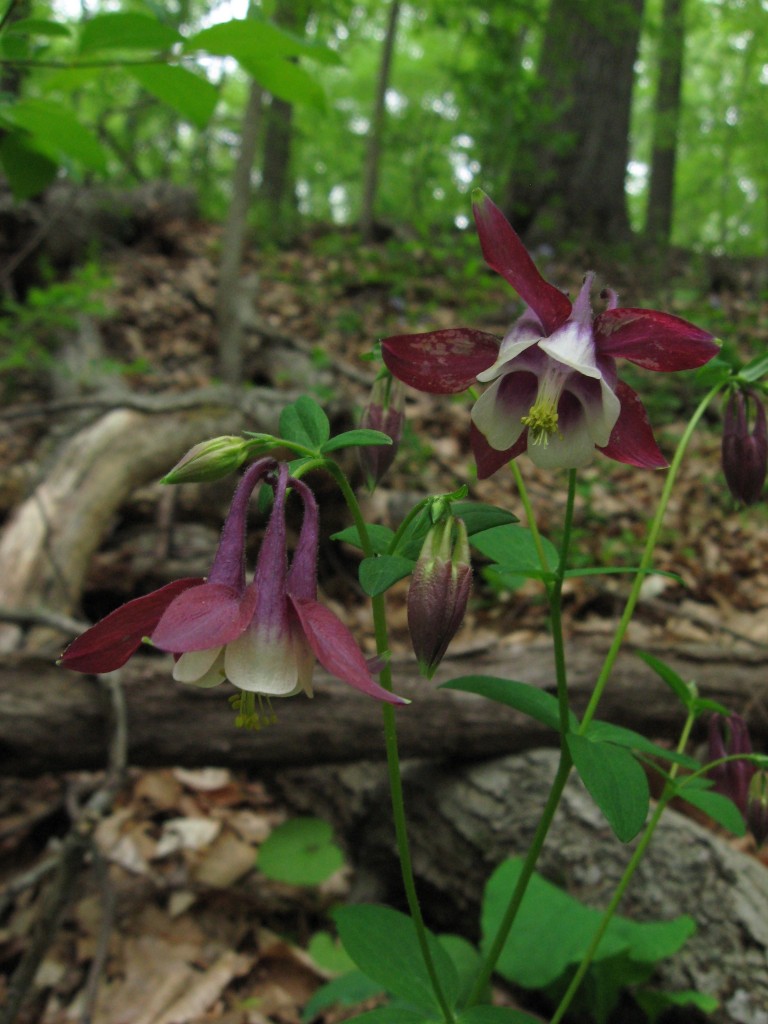
More Columbine, with a dark maroon color, blooming alongside the  bluebells in a protected, obscure ravine.
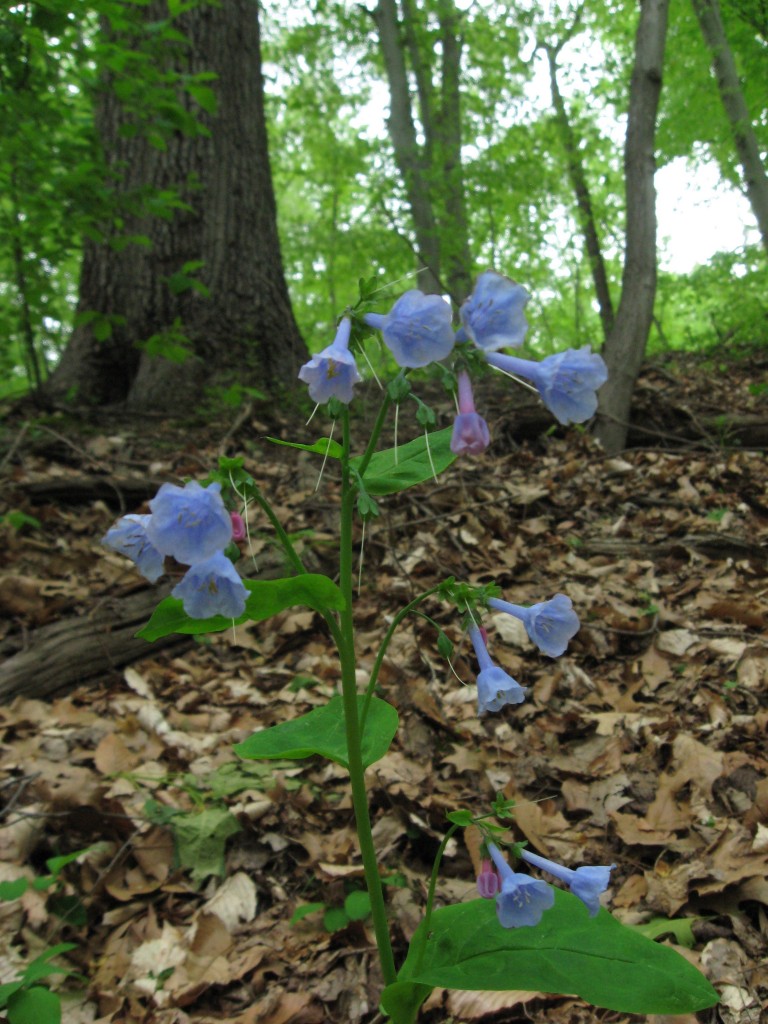
We did eventually find the trail that led us back out of the forest. Â What a great bunch of flowers to find growing in the forests of Roxborough!



